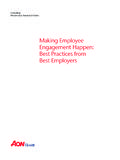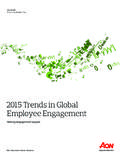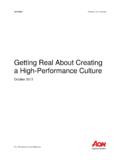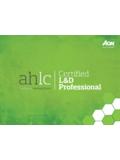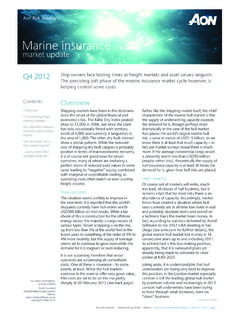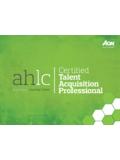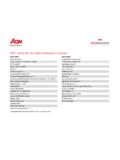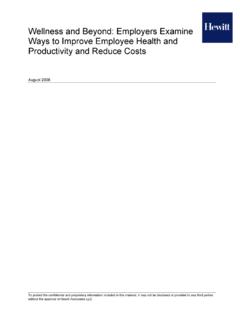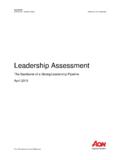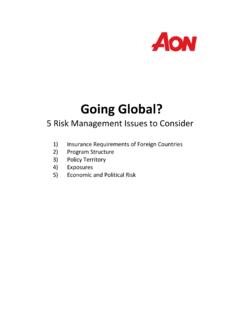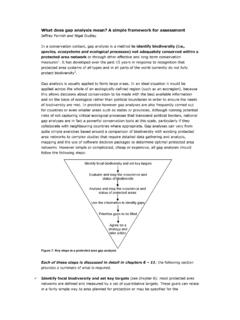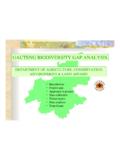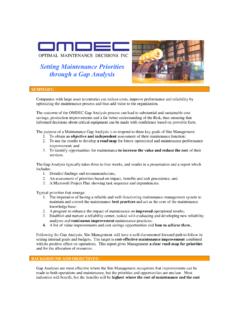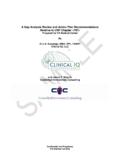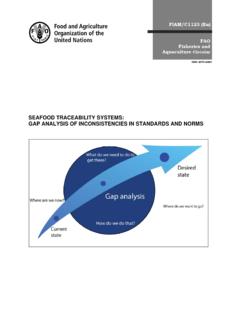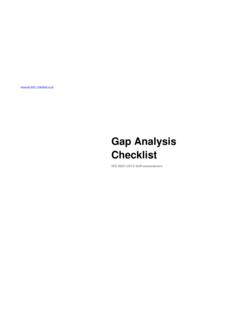Transcription of Gap Analysis: A Way to Improve Ergonomic and Safety ...
1 Gap analysis : A Way to Improve Ergonomic and Safety Program Performance April 3, 2013 Aon Risk Solutions | Global Risk Consulting 2012 Aon Corporation Brief Description: This paper explores the role of individual and non-work-related exposures inthe development of work-related musculoskeletal disorders. Key strategies will also be presentedto assist organizations in expanding into whole-life ergonomics. Authors: Vicki J. Missar, Associate Director, Aon Global Risk Consulting and James Skrabak,orporate Health and Safety Manager, CDM Smith CAon Risk Solutions | Global Risk Consulting 2012 Aon Corporation Brief Description: This paper will highlight tools and techniques to Improve management andcost containment of Safety and Ergonomic programs in difficult economic times.
2 These strategies include effective resource utilization (from vendors to employees to brokers/carriers), projectmanagement tips, and return-on-investment decision trees. Authors: Vicki J. Missar, Associate Director, Aon Global Risk Consulting, Ted DesMarais, AonGlobal Risk Consulting INTRODUCTION A difficult global economy has placed increasing emphasis on the importance of proactive, forward-thinking risk control to reduce rapidly changing exposures. Layoffs, downsizing, plant closures, mergers and acquisitions and Chapter 11 bankruptcy filings are placing new and challenging demands on risk control practitioners, forcing them to think in new ways in terms of resource utilization, exposure identification, and budget availability.
3 Well-structured, proactive risk management programs enable busy risk control practitioners to weather the storm without major loss producing gaps rearing their ugly heads. KNOW THE MOVING PARTS As you are likely well aware, Safety programs have a lot of moving parts. Internal subject matter experts, designated Safety leads, Safety program owners, supervisors and employees all interact and function within the organization. Then, there are the external vendors that enter and exit the organization throughout the year. This can include brokers, carriers, adjusters, case managers, contractors, loss control representatives, and outside regulatory bodies ( OSHA). Understanding the moving parts and their various and multiple interdependencies is critical to ensuring that everyone is moving in the same direction, especially when uniting to combine a well-functioning Safety program.
4 Figure 1 illustrates some common interactions between internal and external customers. For example, senior management may be limited to interaction with the insurance broker, while the risk manager may have interactions with the broker, insurance carrier, claims administrator ( Third Party Administrator), attorneys and others. Then there is the Safety director, who may have ongoing communication with brokers, insurance carriers, vendors, contractors and claims administrators, in addition to attorneys and outside auditors. The structure of the overall Safety program can also impact the internal/external dependencies. For example, there are some organizations where Human Resources (HR) is acting in both the employee, benefits and the Safety disciplines.
5 This dual role can greatly expand their inherent dependencies with external stakeholders due to the fact they need to rely on outside resources to support the program. On the flip side, there are some organizations where the Safety director has little to no interaction with outside stakeholders and ineffective interactions with engineering and human This can dramatically reduce the effectiveness of the Safety director s role and tends to produce communication gaps. Gaps in communication are often internal where Safety , production, and HR are operating without understanding their common goals and the linkages that could Improve individual and collective performance. Whatever the structure, Figure 1 demonstrates the need for organizations to understand these interdependencies, , who is communicating with whom, what is being communicated, and what role the stakeholders (internal and external) have in being a positive contributor to the Safety program.
6 Unfortunately, in many cases, the left hand is unclear what the right hand is doing, leading to consequential miscommunication, multiple agendas and missed opportunities. 2 Defining these linkages and understanding the best internal/external stakeholder lines of communication can pay huge dividends in improving your Safety program. An effective and relatively inexpensive way to understand and continually Improve the Safety program is by conducting an annual gap analysis . A gap analysis is an instrumental tool during challenging economic times as mergers, acquisitions, plant closures, layoffs, early retirements and other business decisions rapidly affect the risk control landscape. Tip: Internal and external linkages need to be understood in addition to clear messaging by the organizational representatives to external stakeholder.
7 By understanding the linkages , who is the right person to communicate to the respective external stakeholders (may change annually to create learning opportunities), and message consistency, the organization will be able to better control the dependencies. 3 Figure 1: Interdependencies between internal and external stakeholders in a common workers compensation Safety program. KNOW THE GAPS Understanding the gaps in the existing Safety /risk control program is an essential first step in the process. One commonly made mistake is to simply chug along without pausing to diagnose and understand why certain programs or locations are underperforming. Executing an annual gap analysis (Shown in Figure 2) will provide keys insights and allow the organization to make adjustments to close the gaps.
8 In addition, an annual gap analysis keeps the Safety program on the path of continuous improvement. 4 A gap analysis enables an organization to identify disconnections and bottlenecks that prevent the many parts within the Safety program from performing at optimal levels, thereby limiting the effectiveness of the Safety program itself. In many cases, the whole is only as great as the sum of its connected parts. A gap analysis will help address some of the following common questions that regularly confront Safety managers. Why is a site lagging in accident rate performance? Why do machine guarding hazards still exist? Why does clutter exist in certain areas? Why does it take an annual audit for a site to clean up? Why do accident investigation forms continue to produce weak corrective action?
9 These and many more questions can be addressed with an annual gap analysis . The process of performing an annual gap analysis can vary but the essential elements are found in Figure 2. One of the most important aspects of a current and future-state assessment is to interview stakeholders to elicit candid feedback on the Safety program. Stakeholders from all levels of the organization, from senior management (yes, this includes the CEO!) to line employees from various shifts and operations. By including representatives from across the organization, you can keep an accurate pulse on their involvement while creating an environment for open dialogue and program-enhancing feedback. To ensure a comprehensive review, be sure to pay close attention to all aspects of the Safety program.
10 Look at policies, procedures, vendors, facilities management, budgeting or the Safety spend, training, etc. Don t be afraid to eliminate things that are not working ( a particular regular meeting) and replace them with more effective approaches (lessons-learned announcements, scorecards, dashboards, etc.). This will go a long way in demonstrating to management that Safety is under the microscope with the ultimate goal of eliminating waste and continuous improvement. Tip: An annual gap analysis in an inexpensive and effective way of thoughtfully improving the Safety program each year and allows parties from across the organization to provide input toward improving the program. 5 Figure 2: Basic elements of an annual gap analysis KNOW THE PLAN Many Safety programs operate without a formal charter or plan, instead functioning from a compliance mentality ( how many employees received what training programs, how many Safety meetings were held, etc.)
